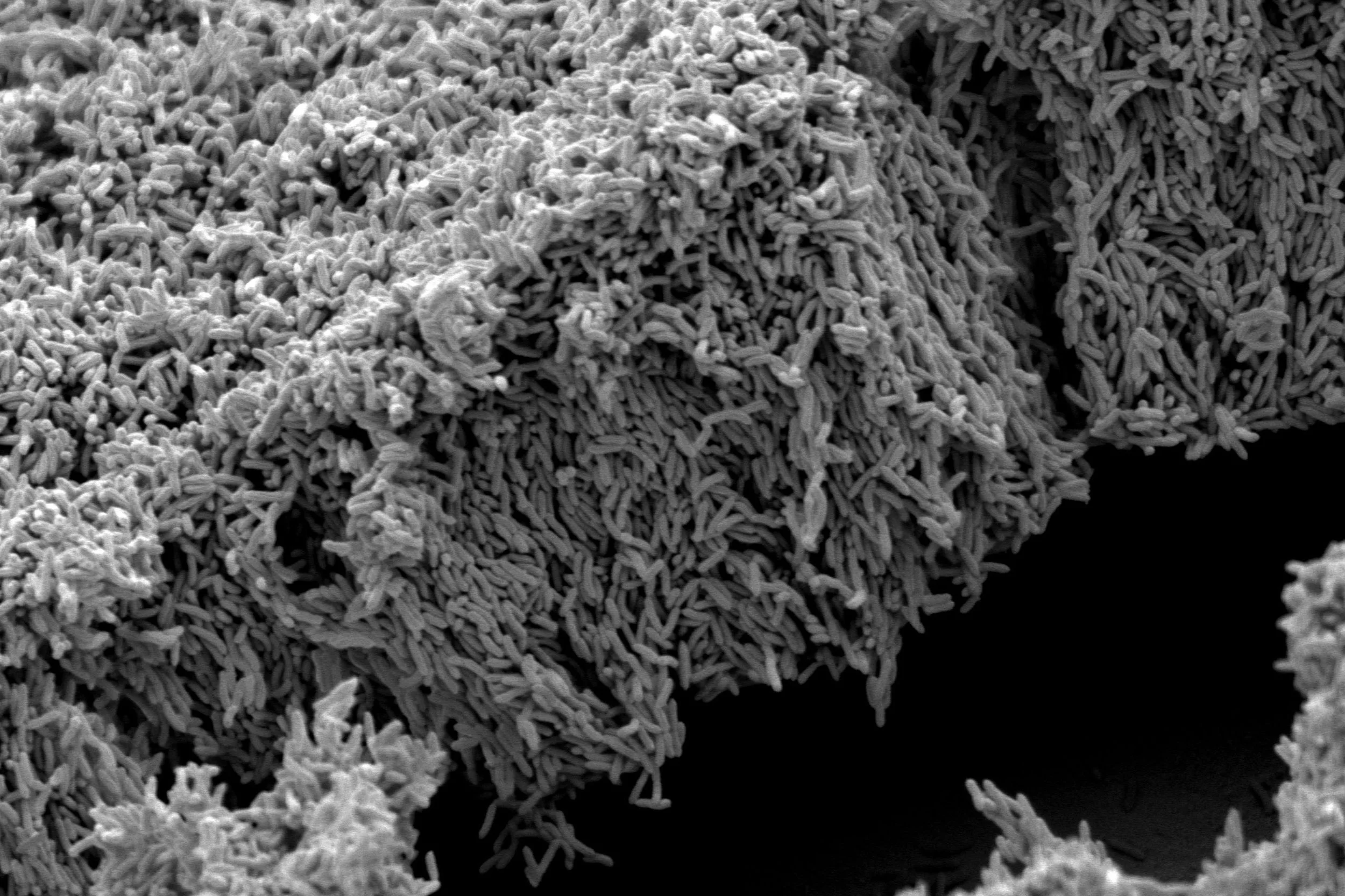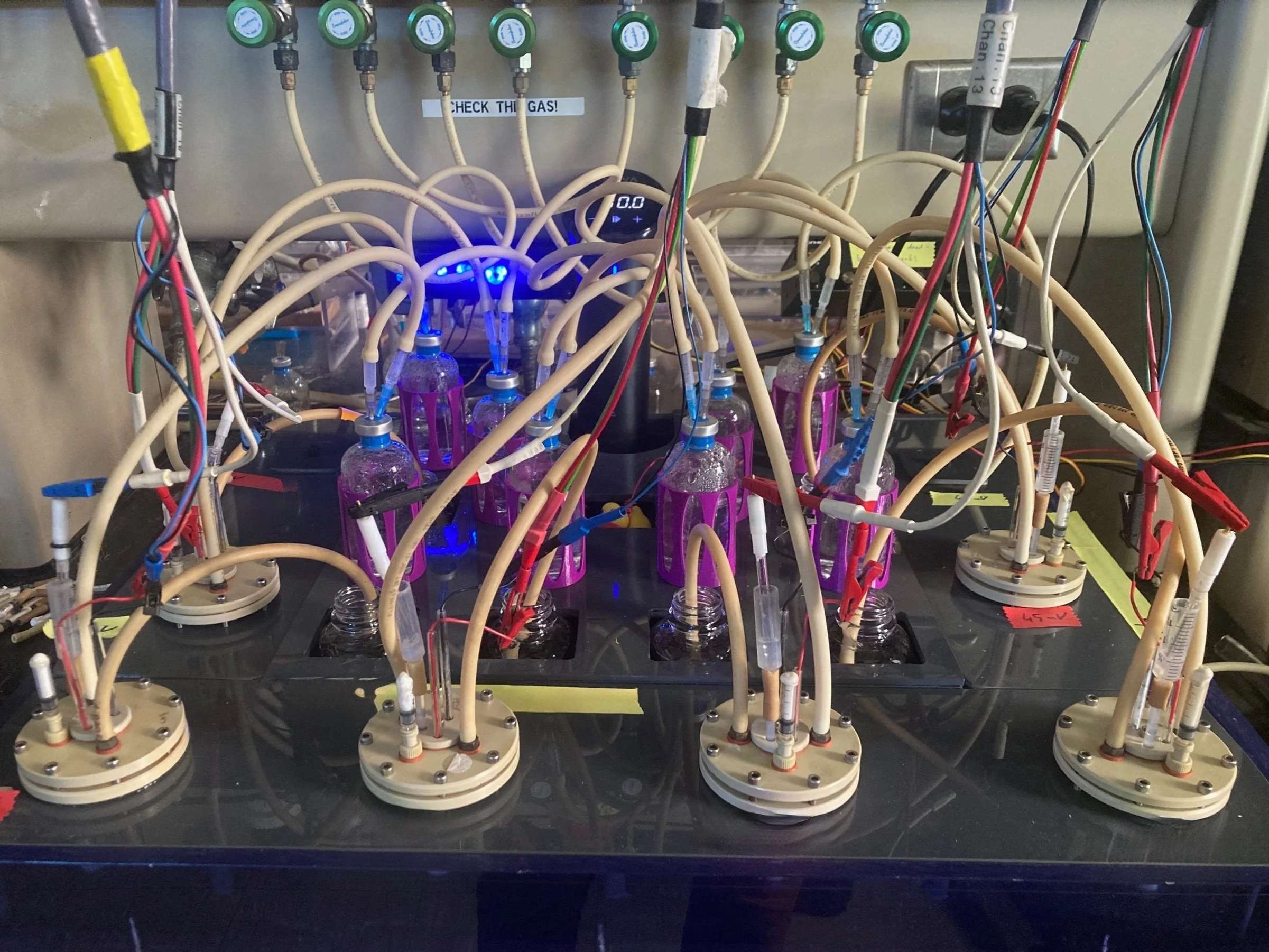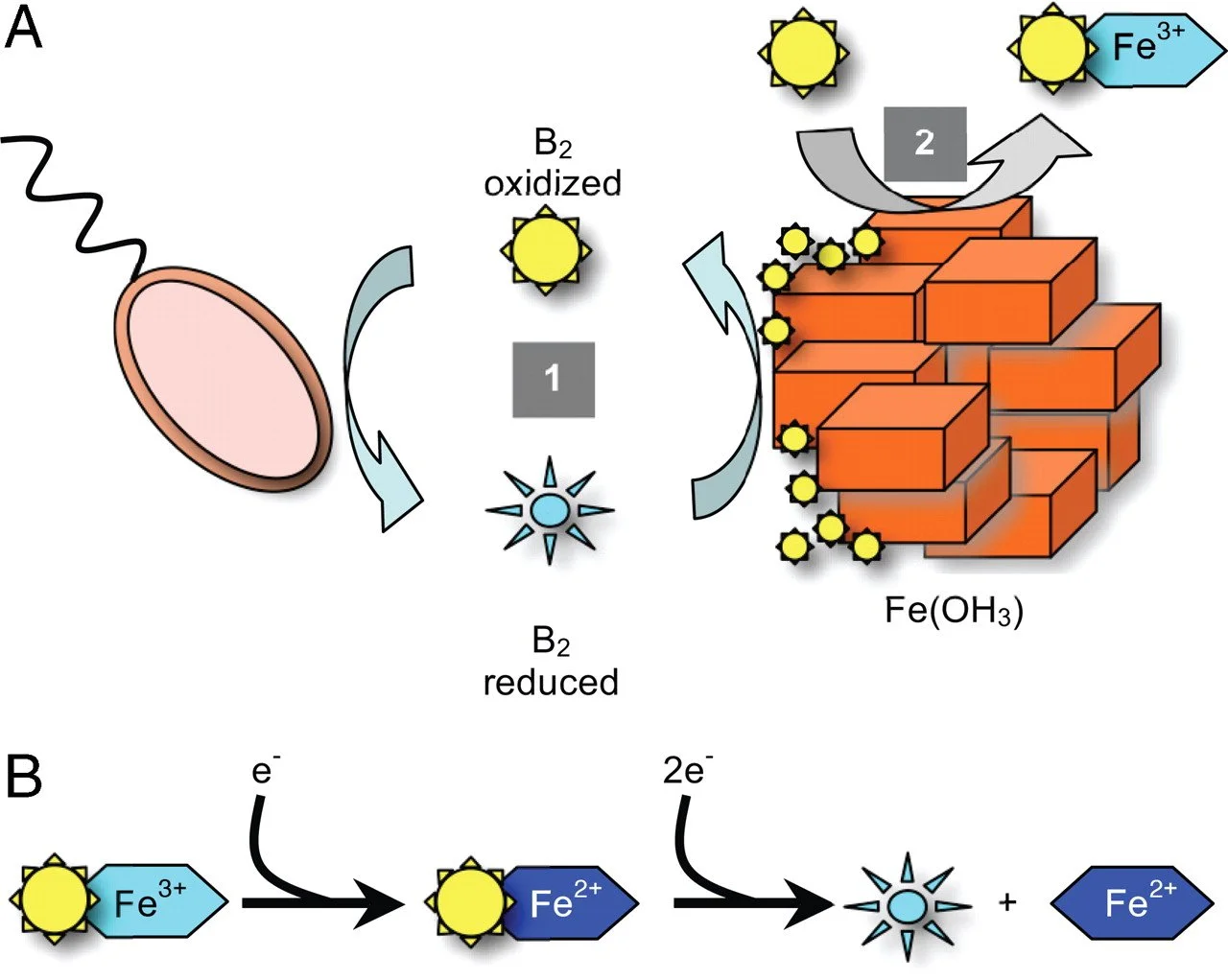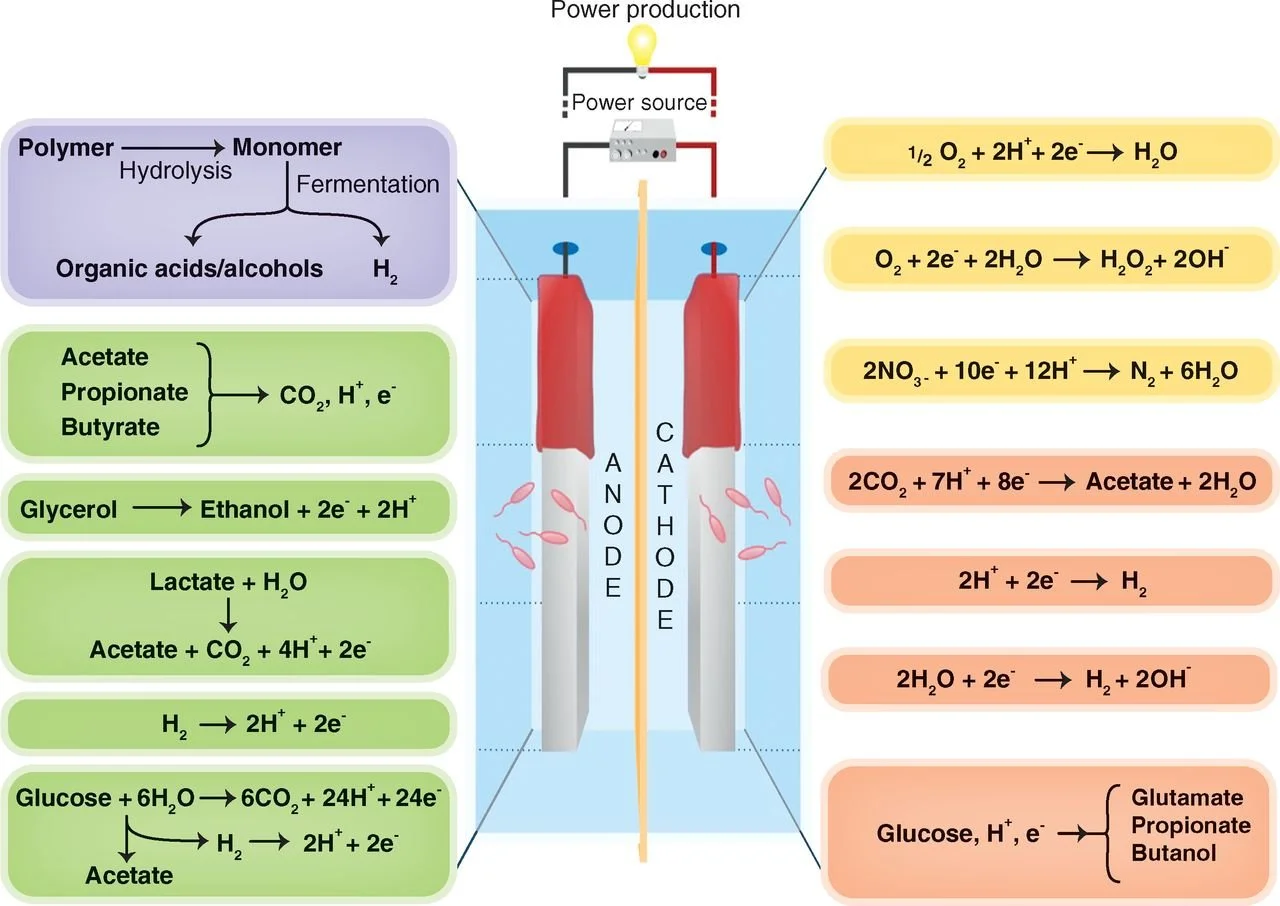
The electroactive microbes
A whole new way to breathe …
Electroactive microbes or exoelectrogens are microorganisms that don’t breathe like we, or most other life forms do. Instead of using oxygen, nitrate, or sulfate as their final electron acceptor in respiration, these microbes transfer electrons directly to solid surfaces like metal oxides or electrodes. It's as if they plug themselves into a rock or a wire to "exhale." This process, known as extracellular electron transfer (EET), rewrites our understanding of microbial life and its possibilities. Some species can even reverse the process—pulling electrons in from a surface to drive energy-consuming reactions like CO₂ fixation.
These microbes were once thought to be rare oddities found only in exotic sediments or deep-sea vents. But research over the past two decades has revealed that electroactivity is more widespread than we imagined. Entire microbial communities thrive on electrical connections, forming conductive biofilms and building literal “living wires.” This discovery has reshaped fields like microbiology, geochemistry, and bioenergetics—and sparked the idea that we can use this microscopic metabolism in powerful new ways.
… and a new paradigm for clean technology
The unique abilities of electroactive microbes have inspired the development of microbial electrochemical technologies (METs), which use microbes as key components in devices that generate electricity, store energy, or produce valuable chemicals. In microbial fuel cells, bacteria that naturally transfer electrons to electrodes can generate electricity while simultaneously treating wastewater. In microbial electrosynthesis, microbes use incoming electrons to convert carbon dioxide into useful compounds like acetate or even bioplastics, offering a biological route to carbon capture and green chemistry.
These technologies represent more than just new applications. They reflect a shift in how we think about sustainability. METs integrate biology and electronics into systems that are often self-powered, self-regenerating, and capable of functioning in decentralized or low-resource environments. They point toward a future where microbial processes help clean water, capture emissions, and produce energy, all with minimal environmental impact. It’s not just about harnessing microbes; it’s about partnering with them to build a cleaner, smarter world.
ISMET’s featured publications
Enrico Marsili, Daniel B. Baron, Indraneel D. Shikhare, Dan Coursolle, Jeffrey A. Gralnick, and Daniel R. Bond
Bruce E Logan & Korneel Rabaey
Ramiro Blasco-Gómez, Pau Batlle-Vilanova, Marianna Villano, Maria Dolors Balaguer, Jesús Colprim and Sebastià Puig





